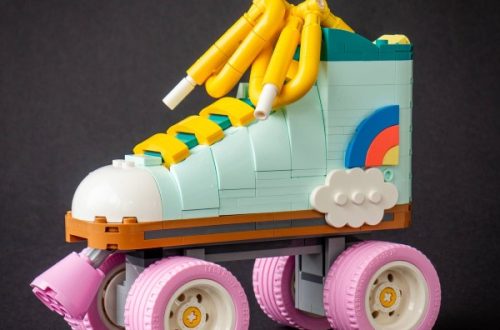The Rubik’s Cube, a seemingly simple puzzle with a deceptively complex solution, has captivated minds for generations. While anyone can scramble the colorful cube in seconds, mastering its solution and achieving lightning-fast times takes dedication and practice. But fear not, aspiring speedcubers! This comprehensive guide will equip you with the knowledge and techniques to transform you from a scrambling novice to a Rubik’s Rubik’s Cube whiz in 2024.
Unveiling the Method: A Step-by-Step Approach
The foundation for speedcubing lies in a well-defined solving method. Many methods exist, but the CFOP (Cross, F2L, OLL, PLL) method is widely favored for its efficiency and scalability. Here’s a breakdown of the CFOP method:

1. The Cross: The first step involves building a white cross on the bottom layer. This serves as a reference point for subsequent steps. Techniques like intuitive recognition and memorizing a few simple algorithms will expedite this stage.
2. First Two Layers (F2L): Here, you position the remaining edge pieces on the first two layers, aligning them with their corresponding center colors. This step involves recognizing patterns and applying algorithms like the “Sune” or the “H-Perm” to maneuver the edges into their correct slots.
3. Orientation of Last Layer (OLL): With the first two layers solved, you now focus on the top layer. This stage involves correctly orienting the last four corner pieces, ensuring that their colored stickers match the center colors. Mastering a set of OLL algorithms, each corresponding to a specific corner orientation scenario, is crucial for speed.
4. Permutation of Last Layer (PLL): The final step involves arranging the last four corner pieces in their correct positions. Similar to OLL, a set of PLL algorithms caters to various last layer configurations. With practice, you’ll be able to identify the specific case and execute the corresponding PLL algorithm seamlessly.
Beyond the Basics: Advanced Techniques for Enhanced Speed
Once you’ve grasped the CFOP method, it’s time to delve into advanced techniques that shave off precious seconds from your solve time. Here are some key areas to focus on:

- Finger Tricks: Mastering efficient finger movements, like the “F2L flick” and the “N-slice,” allows for faster and smoother rotations of the cube.
- Color Neutral Solving: Don’t limit yourself to solving with a specific color facing down. Being comfortable starting the solve with any color facing down improves your ability to adapt to different scrambles.
- Lookahead: While executing an algorithm, train yourself to identify the next steps during the execution itself. This reduces the time spent analyzing the cube after each step.
- Blindsolving: The ultimate test of a speedcuber’s skill is blindsolving, where you memorize the scrambled state of the cube and then solve it without looking. This advanced technique requires significant practice and memorization but is a true badge of honor in the speedcubing community.
Resources and Tools to Amplify Your Speedcubing Journey
The internet is a treasure trove of resources to fuel your speedcubing journey. Here are some valuable tools to consider:
- Online Tutorials: Numerous websites and YouTube channels offer comprehensive tutorials on the CFOP method, advanced techniques, and blindsolving. These visual aids can significantly enhance your learning experience.
- Speedcubing Apps: Several apps offer virtual Rubik’s Cubes, timers, and drills to practice specific steps and track your progress.
- Speedcubing Communities: Joining online forums or attending competitions allows you to connect with other speedcubers, share tips and strategies, and stay motivated.
The Perfect Rubik’s Cube Fast: Choosing the Right Equipment for Speed
The quality of your Rubik’s Cube can significantly impact your solving speed. Here’s what to look for in a speed cube:

- Smooth Turning: A smooth and fast-turning mechanism is essential for speedy execution of algorithms.
- Corner Cutting: The ability of the cube to turn corners without locking up allows for more fluid movements.
- Adjustable Tension: The ability to adjust the cube’s tension to your preference (looser for speed or tighter for control) can optimize your solving experience.
Popular speed cube brands include Speedcubeshop, SCS, and TheCubicle. These brands offer a variety of cubes catering to different preferences and budgets.
The Thrill of Competition: Putting Your Skills to the Test
The speedcubing community thrives on friendly competition. Participating in competitions allows you to:
- Benchmark Your Progress: Competitions provide a platform to measure your solving speed against other cubers. This can be a great motivator to push your limits and refine your technique.
- Learn from Others: Observing other speedcubers, particularly those with faster times, can offer valuable insights into advanced finger tricks and solving strategies.
- Experience the Community: Competitions foster a sense of camaraderie and shared passion for the Rubik’s Cube. You’ll connect with fellow enthusiasts, share experiences, and create lasting friendships.
Here are some resources to help you find a competition near you:
- World Cube Association (WCA): The WCA is the governing body for competitive speedcubing. Their website lists upcoming competitions worldwide.
- National Speedcubing Associations: Many countries have their own speedcubing associations that organize regional competitions.
Conquering the Rubik’s Cube Fast: Putting it All Together
Successfully mastering speedcubing requires dedication, consistent practice, and a strategic approach. Here are some practical tips to help you on your journey:
- Set Realistic Goals: Start with achievable goals, like solving the cube in under a minute, and gradually work your way down. Celebrating smaller milestones will keep you motivated.
- Practice Regularly: Dedicate a specific time each day to practice. Even short, focused practice sessions are more beneficial than sporadic long ones.
- Focus on Accuracy Over Speed: While speed is the ultimate goal, prioritize solving the cube correctly first. Speed will naturally improve with practice and muscle memory.
- Record Yourself: Filming yourself solving the cube can help identify areas for improvement. Analyze your recordings and work on eliminating inefficiencies in your movements.
- Find a Practice Partner: Having a friend or fellow speedcuber to practice with can add a fun element and keep you accountable. You can challenge each other and share tips.
Beyond the Cube: Exploring the World of Speedsolving
The Rubik’s Cube is just the tip of the iceberg when it comes to speedsolving. For those who crave a greater challenge, here are some exciting avenues to explore:

- Megaminx and Pyraminx: These puzzles offer variations on the classic 3×3 Rubik’s Cube with different shapes and complexities. The Megaminx is a dodecahedron with 12 faces, while the Pyraminx is a pyramid-shaped puzzle. Mastering these variations requires applying the same core solving principles to a new format.
- Blindfolded Solving: As mentioned earlier, blindsolving is the ultimate test of a speedcuber’s skill. This involves memorizing the scrambled state of the cube and then solving it without looking. This advanced technique requires significant dedication and practice to develop the necessary memorization skills and solve efficiently without visual cues.
- Multi-Blind Solving: For the truly ambitious, multi-blind solving involves memorizing and solving multiple scrambled cubes consecutively without looking. This pushes the boundaries of memorization and mental manipulation to a whole new level.
- Speedsolving Other Puzzles: The world of speedsolving extends beyond Rubik’s Cubes. Many other twisty puzzles, such as the Skewb, the Square-One, and the Clock, offer unique challenges and solving techniques to explore. Mastering these puzzles requires adapting your core skills and learning new algorithms specific to each puzzle’s mechanism.
Exploring these variations keeps the challenge fresh and allows you to continuously hone your problem-solving abilities and finger dexterity. Additionally, the speedsolving community often embraces these variations, providing a platform to connect with other enthusiasts who share your passion for tackling new puzzles.
By venturing beyond the Rubik’s Cube, you’ll discover a world of exciting speedsolving challenges that will keep you engaged and entertained for years to come. So, once you’ve mastered the classic cube, don’t hesitate to delve deeper and explore the vast and ever-evolving world of speedsolving puzzles!
Fast Rubik’s Cube Fast Solving Method: The Final Push
The Rubik’s Cube is more than just a toy; it’s a gateway to a world of challenge, accomplishment, and a thriving community. With dedication, the right technique, and the resources outlined in this guide, you’ll be well on your way to conquering the cube and achieving impressive solving speeds. Remember, the journey is just as rewarding as the destination. So, embrace the challenge, unleash your inner speedcuber, and experience the satisfaction of conquering the iconic Rubik’s Cube!
Unleash Your Inner Speedcuber: Take the First Step Today!
Speedcubing is an exciting and rewarding challenge that combines logic, problem-solving, and dexterity. Whether you’re looking for a new mental challenge, a way to improve your hand-eye coordination, or simply the satisfaction of conquering the iconic Rubik’s Cube at lightning speed, speedcubing offers something for everyone.
Ready to embark on your speedcubing journey? Here’s how to get started:

-
Learn the Basics: Numerous online resources and tutorials can guide you through the CFOP method and equip you with the fundamental solving techniques.
-
Invest in a Speed Cube: A dedicated speed cube is crucial for achieving fast solves. Research popular brands and options to find a cube that suits your budget and preferences.
-
Join the Community: Connect with other speedcubers online or in your local area. The speedcubing community is a valuable source of support, encouragement, and learning opportunities.
-
Practice Regularly: Dedicate time each day or week to hone your cube-solving skills. Consistency is key to improving your solve times and developing muscle memory.
-
Set Realistic Goals: Don’t get discouraged if you don’t become a world champion overnight. Set achievable goals and celebrate your progress as you refine your techniques and improve your timings.
Don’t wait any longer! Unlock the world of speedcubing and experience the thrill of conquering the Rubik’s Cube in record time. Explore the variety of speed cubes available online or at your local specialty store. With dedication, practice, and the right resources, you can become a master speedcuber in 2024 and beyond.





